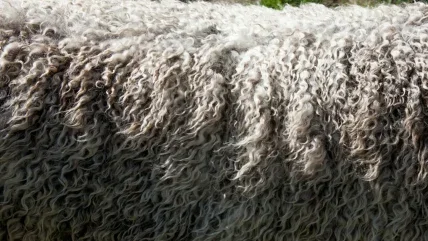
Hides and skins are by-products from the meat and dairy industry. Once they are generated, man has only two options: to let them go to waste or recycle them into leather. Tanners eventually took up the mission of the latter. Thanks to tanning, the hide or skin doesn’t rot, withstands mechanical and thermal stress, can be dyed and becomes fit for various uses.
Typically, there are three tanning techniques: vegetable, mineral and synthetic tanning. The technique that conquered the market relies on mineral trivalent chromium, or Cr(III); around 85–90% of all leathers in the world are Cr(III) tanned. There must be a reason for that.
Indeed, Cr(III) is extremely versatile. It can be used with all typologies of hides and skins; its use is simple, precise and secure; the process time is shortened; and the amount of chemicals reduced. In short, it is the market’s most-demanded processing technique – and tanneries listen to their customers.
Moreover, the trivalent form of chromium is an essential trace element, which the human body needs in small quantities. It contributes to the normal metabolism of carbohydrates, lipids and proteins. In fact, a lot of alimentary supplements are dedicated to this. Cr(III) naturally exists in food like bread yeast, meat, potatoes, cheese, molasses, spices, wholemeal bread, cereals, fresh fruits and vegetables.
So, why are people concerned? This mineral has become a kind of scapegoat for negative influences on human health or the environment, although the corresponding EU legislation (REACH dossier) has redeemed its image. The only relevant issue concerns people sensitive to chromium – a tiny fraction of the population – far less than those allergic to nuts or cat hair, and far less risky as well, as it is limited to contact dermatitis.
Negative perception
Leather has also been associated with hexavalent chromium, Cr(VI). This other form of chromium is not as benign as its trivalent form, but it is not used for tanning, as it has no tanning properties. How can it be, then, that traces of Cr(VI) have been found in certain leathers? That occurs in leather of doubtful origin, where the process and the process chemicals used are not state of the art. In such cases, unfixed Cr(III) can oxidise into Cr(VI). However, appropriate technologies and reputable chemicals, as well as quality control, provide a high level of safety to ensure this doesn’t happen.
The use of trivalent chromium salts can be traced back more than 150 years in the leather industry and no major public health problem has ever been reported. Only vegetable tannins have a longer history of safe use. Also, in spite of all scientific developments, no alternative with equivalent performances has been found so far.
Cr(III), correctly and responsibly used in tanneries, is perfectly okay. So rest assured that chromiumtanned leather from reliable sources presents no danger to the average consumer. Don’t eat your shoes like Charlie Chaplin did in The Gold Rush, of course, but enjoy their long-lasting comfort and beauty – and always ask where the leather is comes from.






